Urban living often limits access to green spaces, making balcony gardening a practical and rewarding solution for city dwellers. A well-planned balcony garden can provide fresh herbs, vegetables, ornamental plants, and a tranquil retreat, all within a compact area. While some may assume that gardening in small spaces is expensive, it is entirely possible to create a thriving balcony garden on a budget with thoughtful planning, resourcefulness, and creativity.
This article explores strategies, materials, plant selections, and practical tips for building a cost-effective, small balcony garden that maximizes space, aesthetics, and sustainability.
1. Planning Your Balcony Garden
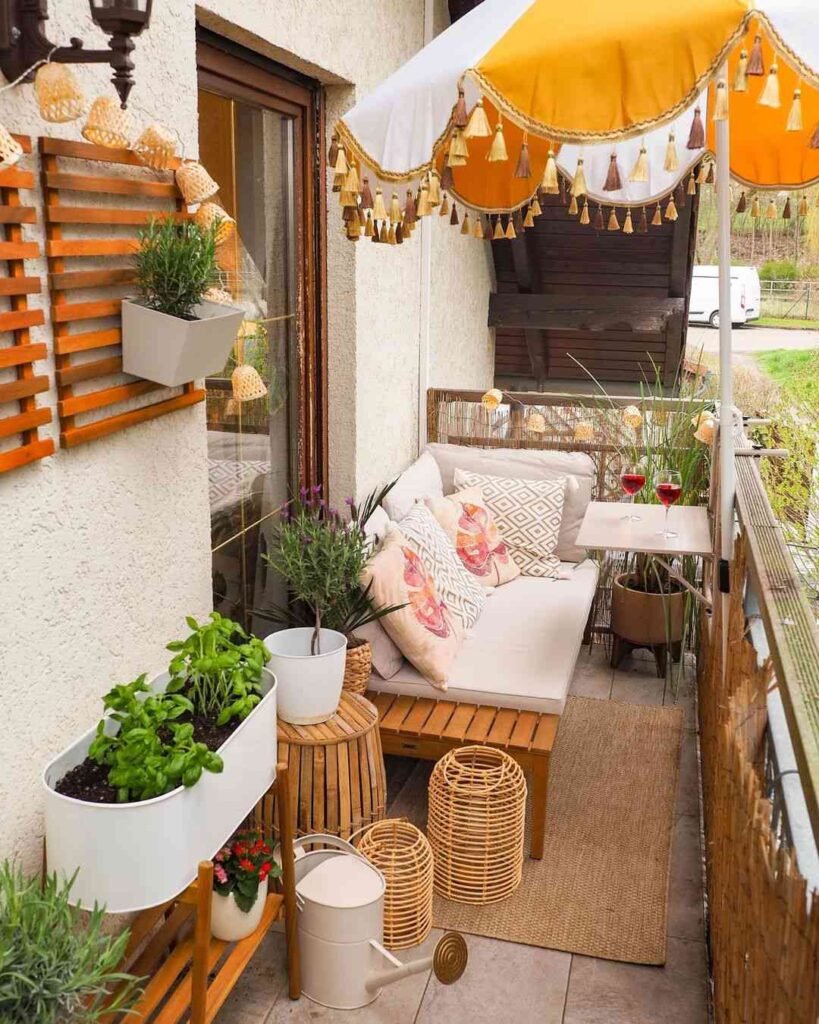
Proper planning is the foundation of any successful balcony garden:
- Assess Space and Layout: Measure the balcony’s dimensions, identify usable areas, and consider sunlight exposure.
- Purpose of the Garden: Decide whether you want herbs, vegetables, ornamental plants, or a mix.
- Budget Setting: Determine a realistic budget and prioritize essential materials and plants first.
- Safety Considerations: Ensure the balcony can support the weight of pots, soil, and plants, especially for larger containers or vertical structures.
Planning helps avoid unnecessary expenses and ensures efficient use of the available space.
2. Selecting Cost-Effective Containers
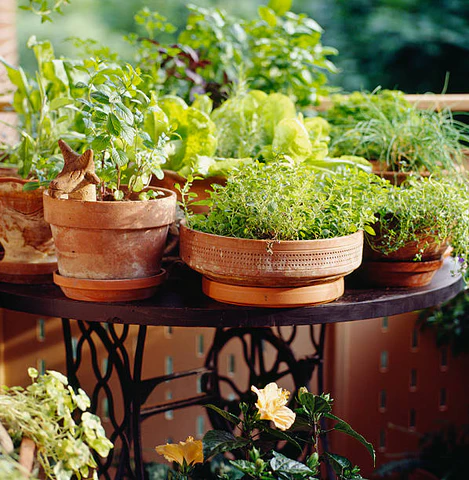
Containers are essential for balcony gardens, but they don’t have to be expensive:
- Recycled Materials: Use old buckets, plastic containers, crates, or jars to hold plants.
- DIY Pots: Convert tin cans, old shoes, or wooden boxes into creative planters.
- Vertical Containers: Hanging pots, wall-mounted planters, and shelves save space while keeping costs low.
- Upcycling: Pallets, old drawers, and broken furniture can be repurposed as planter boxes.
Choosing inexpensive or recycled containers allows gardeners to maximize planting space without overspending.
3. Using Affordable Potting Mix
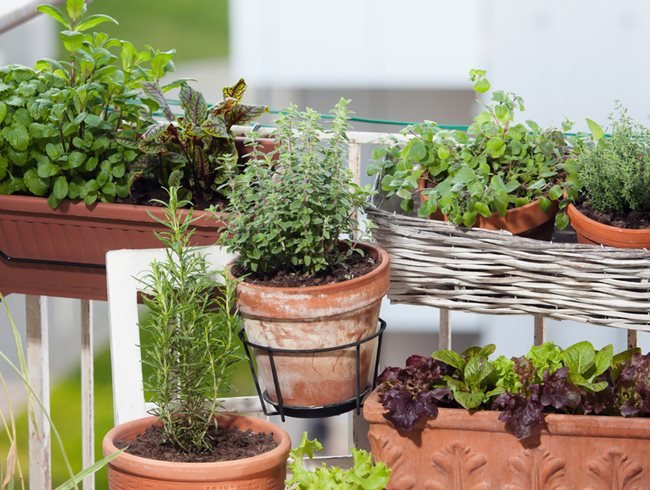
High-quality potting soil is important but can be costly:
- DIY Potting Mix: Combine garden soil, compost, sand, and coco peat for a nutrient-rich, lightweight mix.
- Composting: Reuse kitchen scraps to create compost, reducing fertilizer costs and improving soil health.
- Layering: Use small stones or broken pots at the bottom of containers to improve drainage while using less soil.
A cost-effective, well-draining potting mix promotes healthy plant growth and longevity without expensive commercial products.
4. Choosing Low-Cost, Fast-Growing Plants
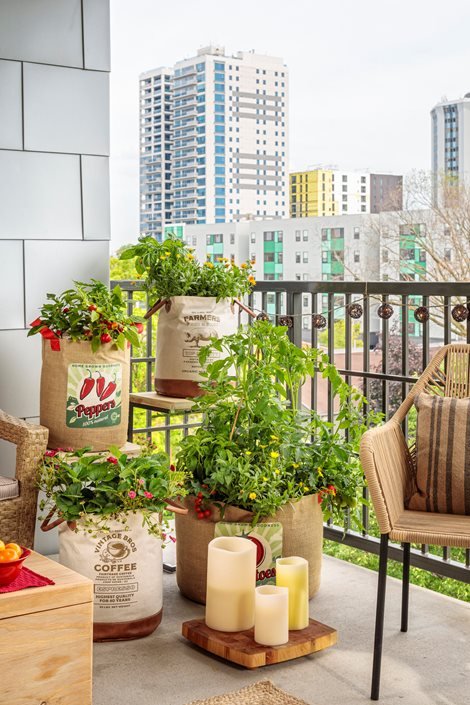
Plant selection significantly affects both cost and harvest speed:
- Herbs: Basil, mint, coriander, parsley, and chives are inexpensive, easy to grow, and provide regular harvests.
- Leafy Greens: Lettuce, spinach, arugula, and mustard greens grow quickly, allowing multiple harvests from the same plant.
- Vegetables: Tomatoes, chili peppers, radishes, and spring onions are suitable for containers and offer high yields per plant.
- Flowers: Marigolds, petunias, and calendulas add color at a low cost while supporting pollinators.
Fast-growing and multipurpose plants provide value for money and frequent rewards, making them ideal for budget-conscious gardeners.
5. Vertical Gardening for Space Efficiency
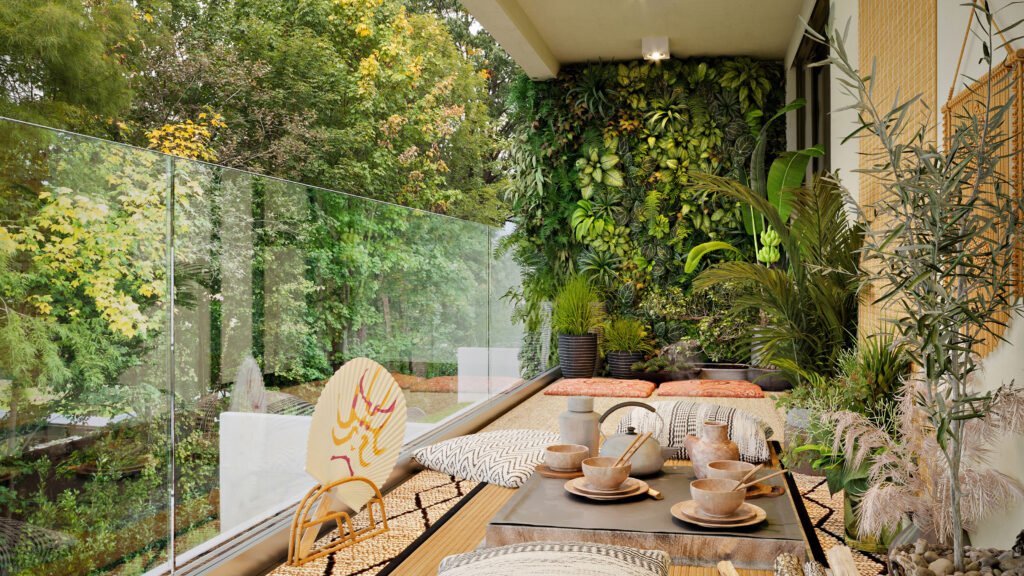
Maximizing vertical space allows more plants without crowding:
- Hanging Planters: Use inexpensive rope or macramé hangers to suspend pots.
- Wall-Mounted Shelves: Repurpose old wooden shelves or crates for a multi-tier planting system.
- Pallet Gardens: Vertical pallet gardens can hold multiple small containers for herbs or flowers.
- Trellises: Encourage climbing plants like beans, peas, or cucumbers to grow upward.
Vertical gardening increases planting area and adds aesthetic appeal while keeping costs minimal.
6. DIY Irrigation and Water Management
Watering is essential but can be made cost-effective:
- Self-Watering Planters: Create simple self-watering systems using bottles, PVC pipes, or recycled containers.
- Water Collection: Use rainwater or leftover water from cooking (cooled) to irrigate plants.
- Efficient Watering: Water early in the morning or late in the evening to reduce evaporation and plant stress.
- Mulching: Use dry leaves, straw, or newspaper as mulch to retain soil moisture.
Efficient water management reduces costs and conserves resources while promoting healthy plant growth.
7. Fertilization on a Budget
Nutrient management is crucial but can be inexpensive:
- Organic Fertilizers: Kitchen waste, compost, and coffee grounds provide essential nutrients.
- Liquid Fertilizers: Prepare nutrient-rich solutions using diluted compost tea or vegetable scraps.
- DIY Fertilizer Mixes: Crushed eggshells add calcium; banana peels provide potassium.
- Fertilization Frequency: Feed plants every 2–4 weeks depending on growth stage.
Affordable fertilization techniques ensure robust growth without commercial chemical fertilizers.
8. Pest and Disease Management
Pest control can be achieved without expensive chemicals:
- Natural Repellents: Use neem oil, garlic spray, or soapy water to deter pests.
- Companion Planting: Grow marigolds, basil, or mint near vegetables to repel insects.
- Physical Barriers: Use nets, mesh, or homemade covers to protect plants from pests.
- Cleanliness: Remove dead leaves, prune overgrown plants, and maintain airflow to prevent diseases.
These strategies maintain plant health affordably and sustainably.
9. Creative DIY Solutions
Budget balcony gardening encourages innovation:
- Recycled Trellises: Bamboo sticks or old ladders serve as climbing supports.
- Decorative Containers: Paint old cans, jars, or plastic pots for a visually appealing garden.
- Garden Furniture: Convert broken stools or tables into plant stands or multi-level gardens.
- Seed Saving: Collect seeds from harvested vegetables for future planting.
DIY solutions allow gardeners to maximize functionality, aesthetics, and cost savings.
10. Seasonal Planning and Crop Rotation
Planning plant rotations ensures continuous harvests and soil health:
- Succession Planting: Sow new seeds every few weeks to maintain a constant supply of fresh greens or herbs.
- Seasonal Plants: Grow heat-tolerant crops in summer and cold-tolerant crops in winter.
- Rotation: Alternate crops to prevent nutrient depletion and reduce pest buildup.
Seasonal planning keeps the balcony garden productive throughout the year without overspending.
11. Budget-Friendly Tools and Accessories
You don’t need expensive tools for balcony gardening:
- Basic Tools: A small trowel, watering can, and pruning scissors suffice.
- DIY Labels: Use popsicle sticks, stones, or recycled tags to label plants.
- Low-Cost Supports: Bamboo sticks, strings, or cloth strips work as plant supports.
- Repurposed Containers: Glass jars, yogurt cups, or plastic bottles can serve as seed starters.
Investing in essential tools and using DIY alternatives keeps the garden functional and cost-effective.
12. Community Resources and Support
Utilizing community resources can save money:
- Seed Swaps: Exchange seeds with neighbors or community gardeners.
- Community Compost: Participate in local composting programs for free organic matter.
- Workshops: Attend local gardening workshops for knowledge, not chemicals or costly equipment.
- Online Resources: Follow free tutorials, videos, and forums for tips on balcony gardening.
Leveraging community resources provides knowledge, materials, and support without added cost.
13. Maintenance and Daily Care
Consistent maintenance is key to a thriving budget balcony garden:
- Daily Checkups: Inspect plants for pests, water needs, and growth progress.
- Pruning: Regularly remove dead or yellow leaves to encourage healthy growth.
- Harvesting: Pick mature leaves or vegetables to promote continuous growth.
- Rotation of Plants: Move containers to optimize sunlight and airflow.
Daily care ensures productive and visually appealing balcony gardens, maximizing the investment of time and money.
14. Benefits of a Budget Balcony Garden
- Cost Savings: Growing your own herbs, vegetables, and greens reduces grocery expenses.
- Fresh Produce: Provides chemical-free, fresh ingredients for everyday cooking.
- Mental Health: Gardening reduces stress and promotes relaxation.
- Sustainability: Reduces carbon footprint and promotes eco-friendly living.
- Aesthetic Appeal: Transforms small spaces into green, inviting areas.
A budget-friendly balcony garden combines practicality, beauty, and sustainability, making it a valuable addition to urban homes.
15. Conclusion
Building a small balcony garden on a budget is entirely achievable with thoughtful planning, creativity, and resourcefulness. By selecting inexpensive containers, using DIY potting mixes, choosing fast-growing and multipurpose plants, and implementing vertical gardening techniques, gardeners can enjoy a lush, productive garden without overspending.
Coupled with efficient watering, affordable fertilization, natural pest control, and consistent care, a budget-friendly balcony garden provides fresh produce, aesthetic appeal, and mental wellness. Urban dwellers can thus transform limited spaces into thriving green sanctuaries, proving that even small spaces can yield big rewards with minimal investment.
